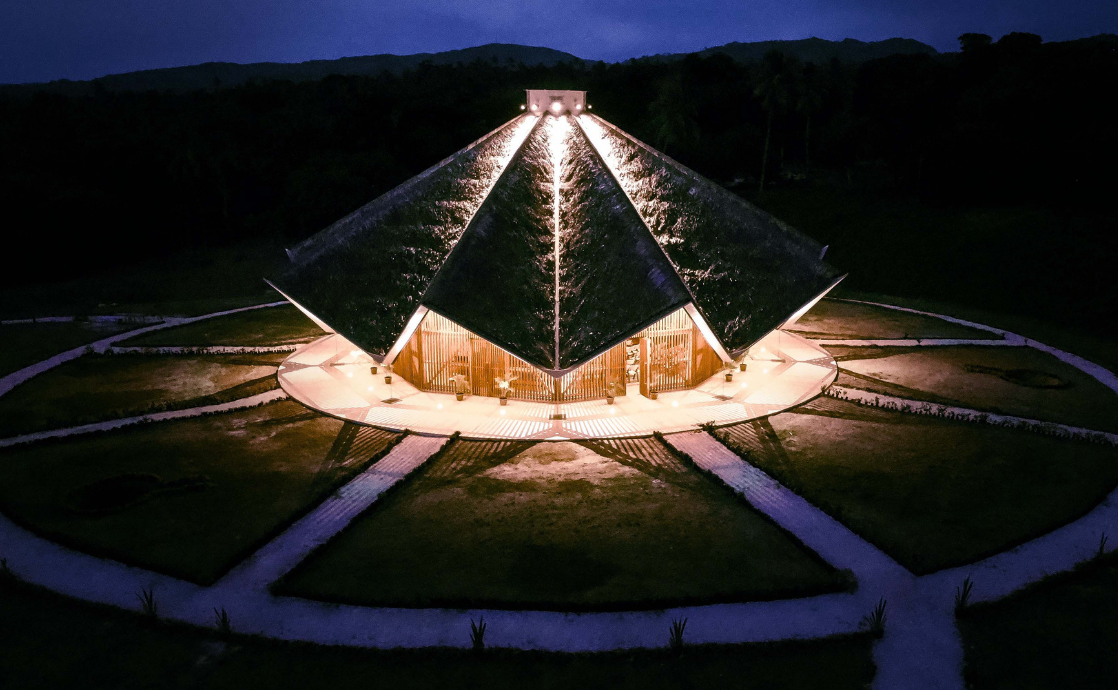Situated in the heart of the Pacific, Vanuatu has recently made history with the inauguration of its first local Baha’i temple. This monumental structure not only stands as a beacon of spiritual aspiration but also serves as a profound synthesis of cultural heritage and universal principles of the Baha’i Faith. In contemplating the significance of this temple, one might ponder: How does a single building encapsulate the aspirations of a global religious community while simultaneously reflecting local customs and traditions? This intriguing juxtaposition reveals both the potential and challenges inherent in the establishment of Baha’i houses of worship globally.
The architectural prominence of this new temple encapsulates the ambition of the Baha’i community to foster an inclusive environment for spiritual growth. Unlike conventional places of worship, Baha’i temples are designed to transcend sectarian divides, serving as spaces where individuals of all backgrounds can convene in pursuit of unity and understanding. The Vanuatu temple, with its unique design elements influenced by local art and architecture, exemplifies this ethos. The inclusion of indigenous motifs not only enriches the aesthetic experience but also signifies a deference to the local community’s rich cultural narrative.
Moreover, the timing of this dedication aligns with a period of heightened interest in the teachings of the Baha’i Faith, particularly in the context of social justice and equality. As the world grapples with myriad challenges, from environmental degradation to social inequities, the principles upheld by the Baha’i community resonate profoundly. The temple stands as a physical manifestation of these ideals, inviting discourse on the interconnectedness of humanity and the holistic vision of peace that is central to Baha’i teachings.
While the prospect of a local Baha’i temple in the Pacific brings optimism, it also presents an intriguing challenge. How can Baha’i communities worldwide effectively engage with local populations without imposing their theological frameworks? Striking the right balance between the universality of Baha’i teachings and respect for indigenous customs remains a critical endeavor. The establishment of this temple necessitates ongoing dialogue, ensuring that local voices are not merely heard but integrated into the fabric of the community’s spiritual life.
The Vanuatu Baha’i temple aims to serve as a veritable hub for interfaith dialogue, education, and community service. The temple is envisaged not merely as a sanctuary but as a center for learning and collaboration. Programs addressing pressing societal issues—such as health, education, and environmental stewardship—are projected to anchor the temple’s activities. By promoting collective action, the temple strives to engage with individuals from diverse backgrounds, fostering a sense of shared purpose and community responsibility.
Engagement with the local population is paramount. The Baha’i community has already initiated outreach programs focusing on unity in diversity, a core tenet of the faith. Such initiatives pose both a challenge and an opportunity: How does one cultivate a genuine sense of belonging while actively promoting a distinct set of teachings? The answer lies in the cultivation of empathy, active listening, and collaborative problem-solving that respects the customs and beliefs of all participants. The successful implementation of these programs will undoubtedly reflect the temple’s capacity to bridge divides and promote understanding.
The temple’s design and its subsequent role within the community underscore the synthesis of beauty and functionality. With its thoughtfully curated spaces, the temple will not only serve as a place of worship but as a vital center for artistic expression and cultural celebration. Events that highlight local art, music, and traditions will allow community members to engage with their heritage while connecting it to broader, universal themes. This synthesis of local and global fosters an environment where diversity is celebrated, and collective identity is nurtured.
The significance of the first local Baha’i temple in Vanuatu extends beyond its physical presence. It symbolizes the dawning of a new era of Baha’i engagement within the Pacific Islands, encouraging spiritual exploration amid cultural richness. The challenges posed by this new venture, such as integrating local customs while promoting the values of the Baha’i Faith, are not insurmountable but require thoughtful consideration and active participation from the community as a whole.
In conclusion, the inauguration of the first local Baha’i temple in the Pacific represents a crucial juncture for both the Baha’i community and the broader Vanuatu society. It embodies a commitment to spiritual growth, community service, and cultural respect. As the temple opens its doors, it invites not only the faithful but also individuals from all walks of life to contemplate its teachings and engage in meaningful dialogue. Ultimately, the success of this temple will be measured not solely by its architectural splendor, but by its potential to foster unity, understanding, and collaborative action in addressing current global challenges. The journey ahead may be fraught with obstacles, yet it is through collaboration and compassion that this project can transform aspirations into tangible realities.
